Dani People: The Most Mysterious Tribe In The World
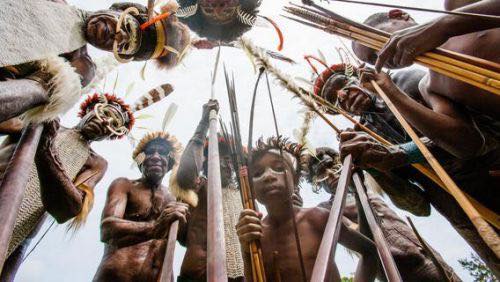
THE MOST MYSTERIOUS TRIBE IN THE WORLD: DANI PEOPLE
It has barely been a hundred years since the Dani People of New Guinea were first contacted. Interestingly enough, they are the most populous tribe in the highlands of western New Guinea, but they managed to remain isolated until the 20th century. Here is a summary of what we know about this mysterious tribe of New Guinea.
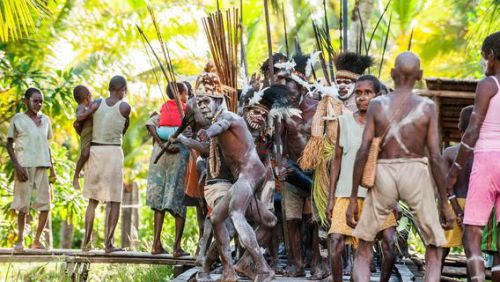
THE FIRST CONTACT FROM OUTSIDE
While leading the New Guinea Expedition, Dutch explorer Hendrikus Albertus Lorentz was greeted by a small group of Dani People who accommodated him for several nights. This led to longer expeditions with explorers staying longer and interacting more with the village folk, especially in 1930s.
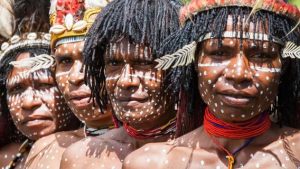
LANGUAGE
The Dani Languages are related to Trans-New Guinea languages or the languages of Paniai Lakes. Although research continues to unravel more about the languages, there are currently four sub-languages: Wano, Nggem, Central Dani and Ngalik
AGRICULTURE
One thing that attracted the attention of the explorers was that they had no metal tools and that they were still using tools made of wood, stone, pig tusk, bone and bamboo. They were also using the bark of trees for clothing, gourd for pottery and rattan for body armor. The introduction of metal axes and knives wasn’t until 1980s.
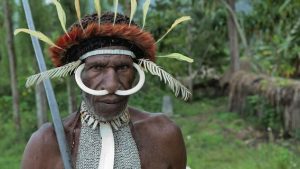
In terms of the division of labor, men and women have almost equal tasks. Both genders are involved in farming. Women were responsible for planting, harvesting and transporting crops, while men were taking care of the maintenance and construction especially for water management. As for hunting, both genders took part in hunting with men going after game animals while women captured insects, lizards and frogs.
SOCIAL LIFE
Both men and women can be seen wearing revealing clothes. Men are almost naked besides the crotch area that is usually covered with gourd, sheath or rattan skirts, although almost all of these options reveal the outline. Women are mostly topless with breasts showing, although the younger generations have been covering the breast region. Their skirts are usually made of grass, fiber coils or seeds. Currently, the Indonesian government has been providing dresses and trousers for many Dani villages.
RELIGION
The majority of Dani people were animists, attributing a living soul to plants, animals, rocks, rivers and so on. They particularly believed that water bodies had spirits. Furthermore, their belief system involves afterlife and the existence of ghosts.
They would give great care towards the souls of the dead so as to not frustrate them since they were scared of being cursed. It is also believed that they cut off the fingers when they loose a loved one. This symbolises that pain they’re going through and also to remind them.
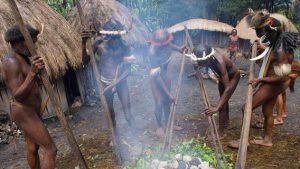
MODERN TIMES
Currently, tourism has been a developing sector in the area as well as trade. Many Dani people are currently involved in growing and selling rice, especially to Indonesia. As for the governmental positions, most of these have been taken up by people who migrated from Indonesia, so a majority of Dani population is still occupied with farming. However, they have started to partake in private businesses.
Some residents who learned English over time organize trekking tours into their village for tourists from overseas. These people earn a significant living through various activities such as posing for photographers, performing battles and ritual dances.



